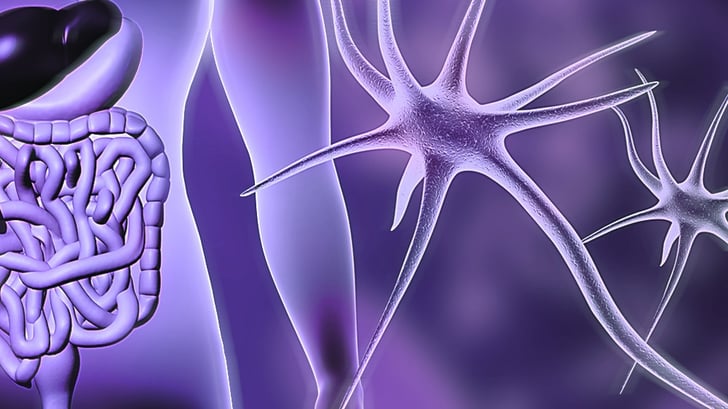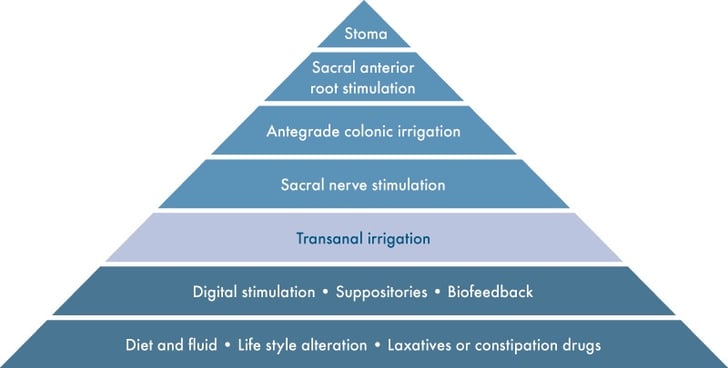From your first minute on this Earth, your poo is of greatest interest. First to your parents (Is the child constipated? What color is the poo?). Then, after a gentle transition, you are supposed to be the poo manager yourself. And it is important - because when the bowel works, life tends to work.

Today we will talk about neurogenic bowel dysfunction – when the bowel doesn’t work – and also about connected treatments.
Few things cause more misery in people’s lives than bowel problems. Many experience mental stress and reduced quality of life, and some need time-consuming bowel management.
In fact, several studies1 show that for spinal cord patients suffering from bowel dysfunction, bowel management is the most frustrating, embarrassing, and time-consuming challenge of their day, ranked as a larger problem than e.g. pain, sexual function, and inability to walk.
Neurogenic Bowel Dysfunction
Neurogenic Bowel Dysfunction (NBD) is when the bowel doesn’t work properly due to loss of normal sensory or motor control. Diagnoses that put patients at high risk for NBD include spinal cord injuries, Multiple Sclerosis, Parkinson’s disease, spina bifida, and diabetes mellitus.
Treatments for NBD
Successful management strategies for bowel issues are individual and they can be difficult and time-consuming to find. Treatments are often ranked in order of invasiveness, i.e how much they invade your daily life. The first coping strategy is often a change in diet, fluid intake, and other lifestyle alterations.
Laxatives, stool-modifying drugs, suppositories, and digital stimulation are also common treatment options in the beginning. These are marked in dark blue in the treatment pyramid below. Many patients struggle with these options for long periods, without any real success.

The next step in the pyramid is Transanal irrigation (marked in grey). This step is often underexploited. Transanal irrigation has the potential to help a lot of people with bowel dysfunction, before therapies such as nerve stimulation and stoma, the top tiers of the pyramid, are considered.
But it may require a dose of patience since it can take time for the body to adapt to the procedure. It is critical to success to stay with the therapy during an adjustment period of usually 4-12 weeks.
What treatment option is for me?
The simple (and unfortunately not so uplifting) answer is that you must find your treatment option by trial and error. Regrettably, there is no shortcut to finding the method that works for you.
Leading UK Neuro-Gastroenterology consultant Dr. Anton Emmanuel speaks about a pathway of care. You need to start at the base of the pyramid and work through the different treatment options until you find something effective. If one treatment doesn’t work or doesn’t work properly, you should switch to, or add, something else – all in a controlled manner in consultation with your doctor.
Consult your doctor
Before you get started, you should discuss your aims and objectives with your doctor. What do you want to achieve? Is it greater independence, avoiding infections or is it something else? Without a specific goal, it is harder to know when you will reach it.
These are a few other metrics to measure how successful your treatment is:
- Hours spent on the toilet
- The incidence of bowel incontinence
- Independence and quality of life
Don’t be surprised if your doctor asks you questions about all of this as you get started with different treatments.
To learn more about Neurogenic bowel and treatment, click the button to download a brand new Encathopedia about Neurogenic Bowel Dysfunction and transanal irrigation!